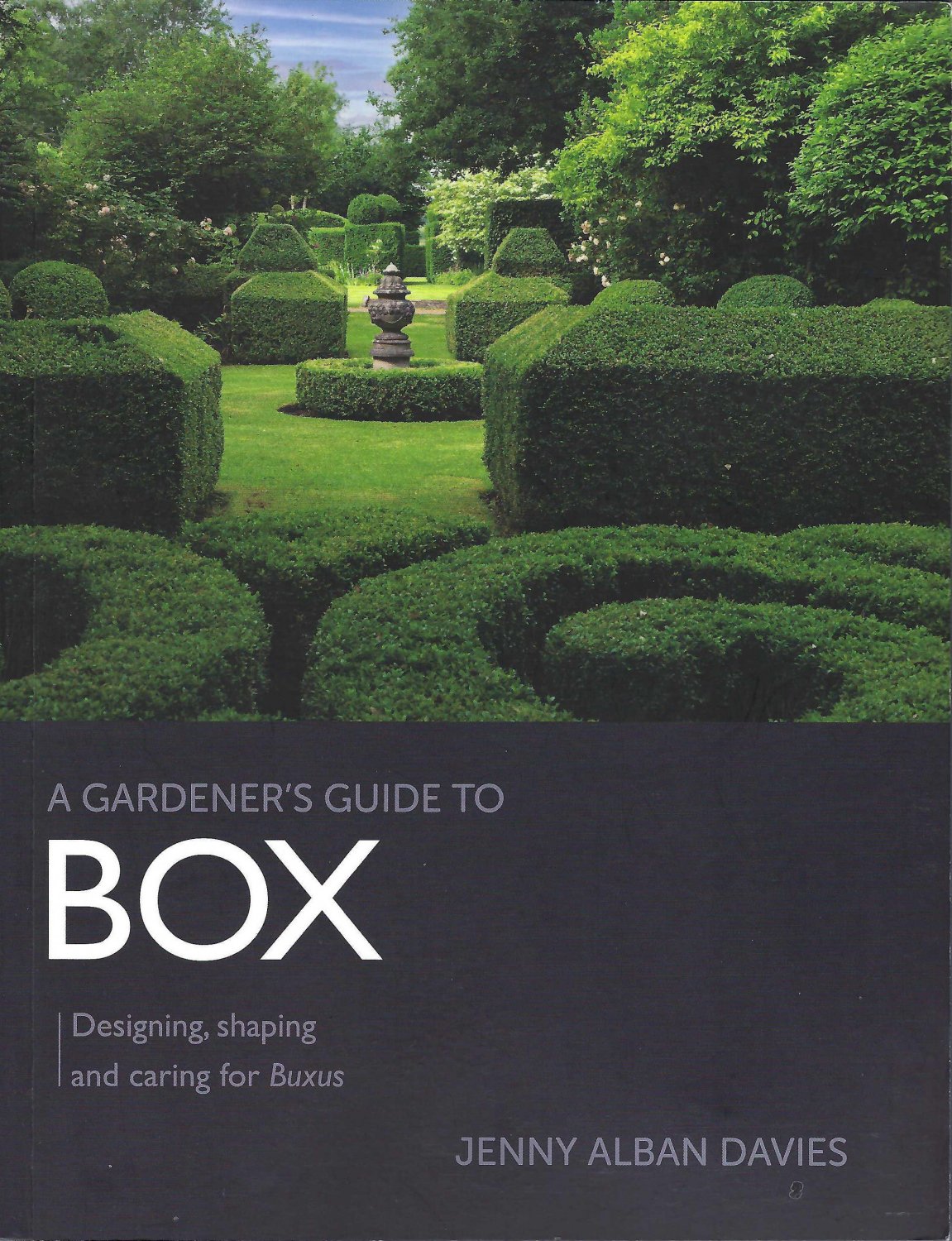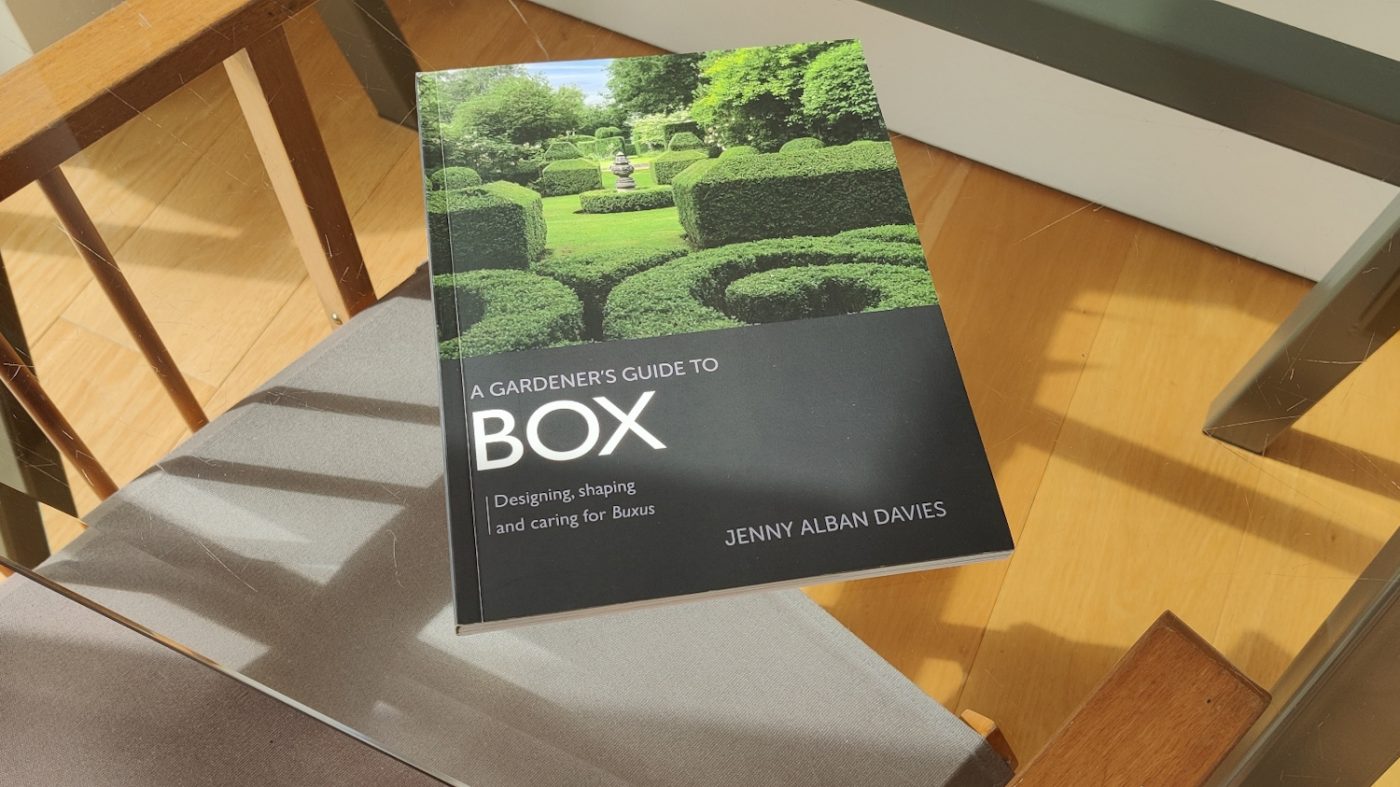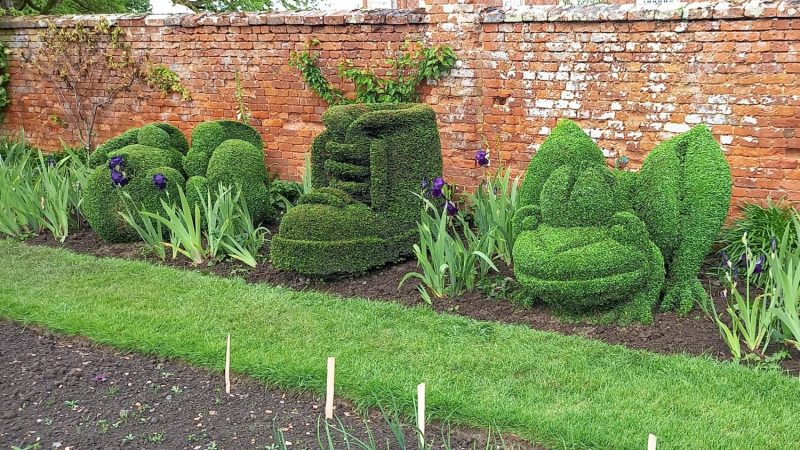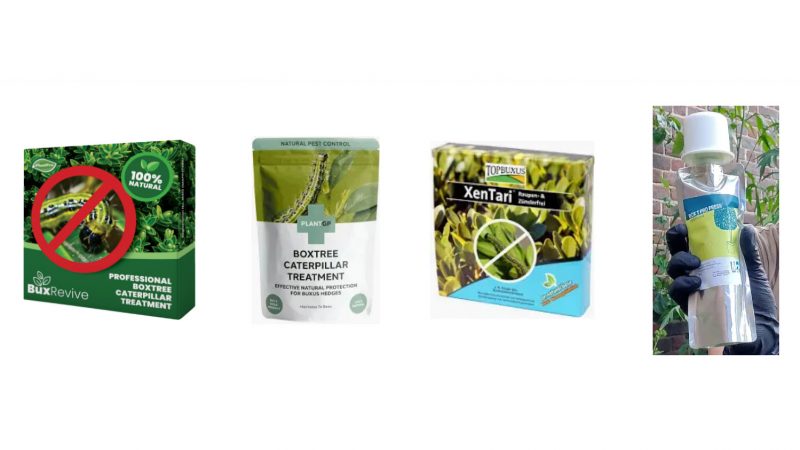A Gardener’s Guide to Box

Book review by Lynn Batdorf
There are countless articles and many books, solely dedicated to understanding box. The first box book was published in 1859; today, the field boasts about 135 titles. From this specialized, crowded library of box books one might justifiably believe that “anything I need to know about box is already in a book.” However, Jenny Alban Davies’ new book, A Gardener’s Guide to Box, proves there is still more we can learn about our beloved box.
Jenny Alban Davies earned a certificate in Amenity Horticulture from City and Guilds of London, College of West Anglia, in 1986. In 1995, she opened River Garden Nurseries (www.river-garden.co.uk) in Otford, specializing in box. Her box inventory can be found in the RHS Plant Finder. For several years, Davies was a topiary instructor at RHS Hyde Hall. She has been an EBTS-UK member since its inaugural meeting at Dorney Court in 1996. It is through this combination of formal education, extensive training, and decades of professional expertise that she can give English gardeners a valuable, accurate, comprehensive, insightful, and contemporary guide for box care.
The softcover book is 7½ inches wide by 9⅝ inches tall with 114 pages and 8 chapters. Thoughtfully produced, the book is printed on paper thin enough to allow the reader to comfortably navigate its pages, yet thick enough to avoid bleeding. The sheen highlights both the text and images without overpowering either. The efficient, beautiful, and professional layout allows the reader to savor and enjoy every page. The font style and size of the text are easy to read without wasting space. The 150+ high-resolution, full color images and illustrations are exceptionally well composed, well chosen, and appropriately sized. The balance between these two elements (text vs images) is always challenging for an author and publisher, yet here the two have perfectly achieved this delicate balance.
The real strength of Davies’ book is the writing. The author has a lot to share without being verbose or leaving the reader confused. With an acute and intimate understanding, she discusses all the salient box topics English gardeners might need. Subtitled “Designing, shaping and caring for Buxus,” the book holds plentiful details in these areas. Following a 10-page introduction are chapters on horticulture (4 pages); landscape design (44 pages); popular species and cultivars (22 pages); creating, maintaining and renovating topiary (18 pages); shearing (8 pages); pests (7 pages); diseases (5 pages); propagation (4 pages); and planting and transplanting (10 pages); with a nice touch of plant physiology and soil chemistry throughout. There is a useful three-page subject index at the back of the book. Davies presents this wealth of information with a clean, clear, and informed writing style. This allows the reader to easily understand important, sometimes complex or confusing, box concerns.
There are only a few essential horticultural principles to properly care for box. In the wild, box may grow for several hundred years with no care. By contrast, the garden is under human control. The enthusiastic gardener often subjects box to shearing, digging, watering, mulching, and more. Without a full understanding of why they perform these tasks, gardeners will likely be asking, “Why did my healthy box suddenly decline and die?” Carefully reading and faithfully applying the principles in Davies’ book will help keep a gardener from ever asking this regretful question.
A Gardener’s Guide to Box is also a very timely book. Throughout much of the world, box blight (Calonectria) and the box tree moth (Cydalima) are infamously conspiring to destroy box in both small and large gardens as well as countless acres of box forests. Faced with this onslaught, enthusiasts and gardeners might wonder if this stalwart shrub, successfully cultivated for millennia, is still relevant. Jenny Alban Davies gently reminds us of the many intangible and potent pleasures box bestows. She successfully persuades the reader: “Yes. Box can be, and ought to be, celebrated and properly cared for.”
It is a mystery that such a well-produced book, overflowing with valuable information on relevant box care, can be sold at such a modest price. Because every box gardener ought to have this reference, it is likely this price was carefully chosen so all might afford it. It is available from www.Amazon.co.uk for £9.59 (Kindle) and £14.99 (paperback) as well as www.Amazon.com for US$17.99 (Kindle) and US$34.95 (paperback). A print version is also available from www.bookdepository.com for US$18.83.
Lynn R Batdorf, since 1985, serves as the International Cultivar Registration Authority (ICRA) for Buxus, appointed by the International Society for Horticultural Science (ISHS). He earned an undergraduate degree in Ornamental Horticulture. For 36 years, he served as curator of the National Boxwood Collection at the U.S. National Arboretum in Washington, D.C. He has authored three books and over seventy peer-reviewed articles on boxwood. Batdorf has been awarded Honorary Life Member by the American Boxwood Society, the EBTS-UK, and the Association Française pour l’Art Topiaire et le Buis.




